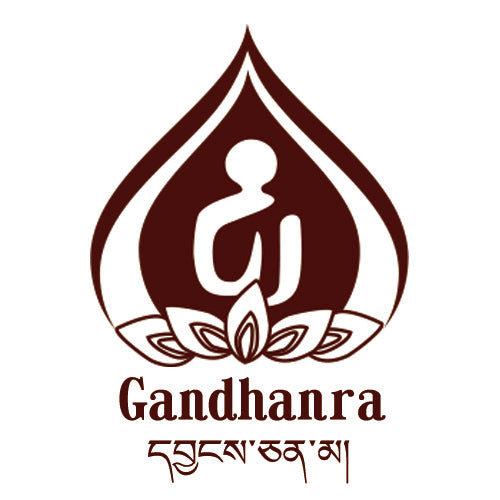
Gluttony, The Face of Glory or Kirtimukha: The supreme divinity within the broken body

"The Face of Glory or Kirtimukha"
19th century, private collection

"Infinite Light Buddha and Bodhisattvas with Attendants"
Mid-14th century, Rubin Museum of Art
Detail: The face of glory at the top of the dais

"Lion-faced Zhabazha Top Metalwork Set"
Late 19th century, Rubin Museum collection
The worshipers of Shiva first started using it
They adorned temples with the face of the fierce demon
From India to Central Asia, Nepal and Tibet
The face of glory has become a common decoration for people
It is the best guardian and totem of all traditions
American Tibetologist Cameron Bailey
Vertical cylindrical or columnar flags, fan-shaped metal fittings or architectural wood carvings, used on the square panels of classical scriptures, as well as on the curved surfaces of knives, swords, and ritual objects; a strange spirit with a face resembling a feline, holding onto a support point with both hands, constantly spitting out treasures or strings of treasures from its mouth (in earlier times even swallowing dragon species), a head with no body appearing frequently in the details of the mentioned objects.
Nowadays, people often overlook the origin myths and transmission history of this image, viewing it as a protector against misfortune and disasters, guarding family wealth and treasured classics as spiritual beings, and as decorations for serene spaces and divine spirits. In Tibet, strange spirits with incomplete bodies but internal compassion and power are depicted in key locations in households and on furniture, while their presence can also be found on pillars and thrones in temples. Creating a more independent space between perfection and imperfection, this is the unique philosophical and aesthetic essence of these strange and mystical beings.
Looking at the online world today, people are using various strange names without much thought: the term "glutton" originating from Han China, the originally derived from the Eastern South Asian Shiva believers "face of glory", and the "Shibaza" originating from Kathmandu. It is important to note that the association of this special image with the glutton comes from the forced association of Ming and Qing scholars in Han China. Today, we will focus on the other two terms, namely "face of glory" (གྲགས་པའི་བཞིན་རས་) and "Kirtimukha" (ཙི་པ་ཊ་/ཙི་པ་ཏ་).
The term "face of glory" originates from the Sanskrit word किरीटीमुख (kirtimukha/kiritimukha), which translates directly to "face with supreme glory." In some texts from the Mahanadi River region in South Asia, this appellation is interpreted as "the face of a supreme warrior." Another term "Zhibaza" comes from the Sanskrit word चिपिट (cipiṭa), meaning "flat nose." The Nepali word "chepu" in the Kathmandu Valley area has a similar meaning, originating from "flat nose," which seems to be considered a characteristic of protective deities in the region.

"Decorative Gateway of the Yetakha Baha Temple in Kathmandu"
Wooden structure dating back to the 10th to 11th centuries.

"Wine Ewer, Plate, and Cup Stand"
Gold with inlaid turquoise, early 8th century, Tibetan
Contrasting the beast mask at the center of the plate with the "Face of Glory"

"Long-tongued Jabazah Metal Ensemble"
Private collection, Kathmandu region, 18th century
The origins of both "Ronger Rong" and "zhibaza" seem to have a tendency to expand from a single plot to multiple traditional local plots. The eastern region of South Asia has always been seen as a "pure land of indigenous hedonism" (analysis and practice of sensory experiences), with the earliest connection between the "Ronger Rong" and the worship of Shiva in the eastern region of South Asia, where Shiva uses the strange spirits to punish the stars. The obedient Shiva's command, thereby devouring their own bodies (they are seen as gatekeepers or temple protectors).
This passage recorded in "The Book of Past Events" has been interpreted by believers in later generations as a kind of spirit of dedication, which has been summarized by Buddhists as compassion. Since the 7th century, the "face of glory" has been prevalent in Central Asia (associated with local worship of beasts and hunting), Nepal, and Tibet, with the understanding of this image in Tibet mostly related to the "shiba za decoration" in Kathmandu (seen in the unique supernatural images in Torin Temple). The symbolic nature of mythology has been appropriated into the order of daily life, and the mobility of artisan groups has imbued this symbol with even more and richer meanings.
In classical Tibetan literature from the 11th to the 14th century, there are narratives of Buddhist philosophers recounting the events of different religious communities in the Kathmandu area confronting each other. The flat-nosed "zhibaza" of the "Face of Honor" also has two different writing styles. As a relative of the garuda bird, the "Chep" (elder brother or father) is believed to have only hands and a face when born, and various Hindu faith communities in the Kathmandu area see it as a symbol of "inner perfection." In the Buddhist community in the same area, the relationship between "Chep" and Manjushri has a special master-disciple relationship, and it is recognized as the protector deity of Buddhist temples by Buddhist Bodhisattvas, with the difference between body and mind being seen as a virtue of Buddhist practitioners.
Both of the above origin myths associate "Chep" with the Garuda, or Golden Winged Bird. We can find evidence of this association in the decorations of thrones and doorways. With the rise of the secular decoration movement in the 17th century, the people of Tibet gradually forgot the specific origins of the "glorious face" or "zhibaza," and all symbolic meanings became mixed and used, eventually becoming a part of Tibetan decorative art.

"The Face of Glory or Zhibaza Metal Grouping"
18th century, private collection

The Vajra Bell, 17th century, private collection
Detail: Decorations of the "Face of Glory" on the surface of the bell

From the portal deity to the decorative sacred objects

